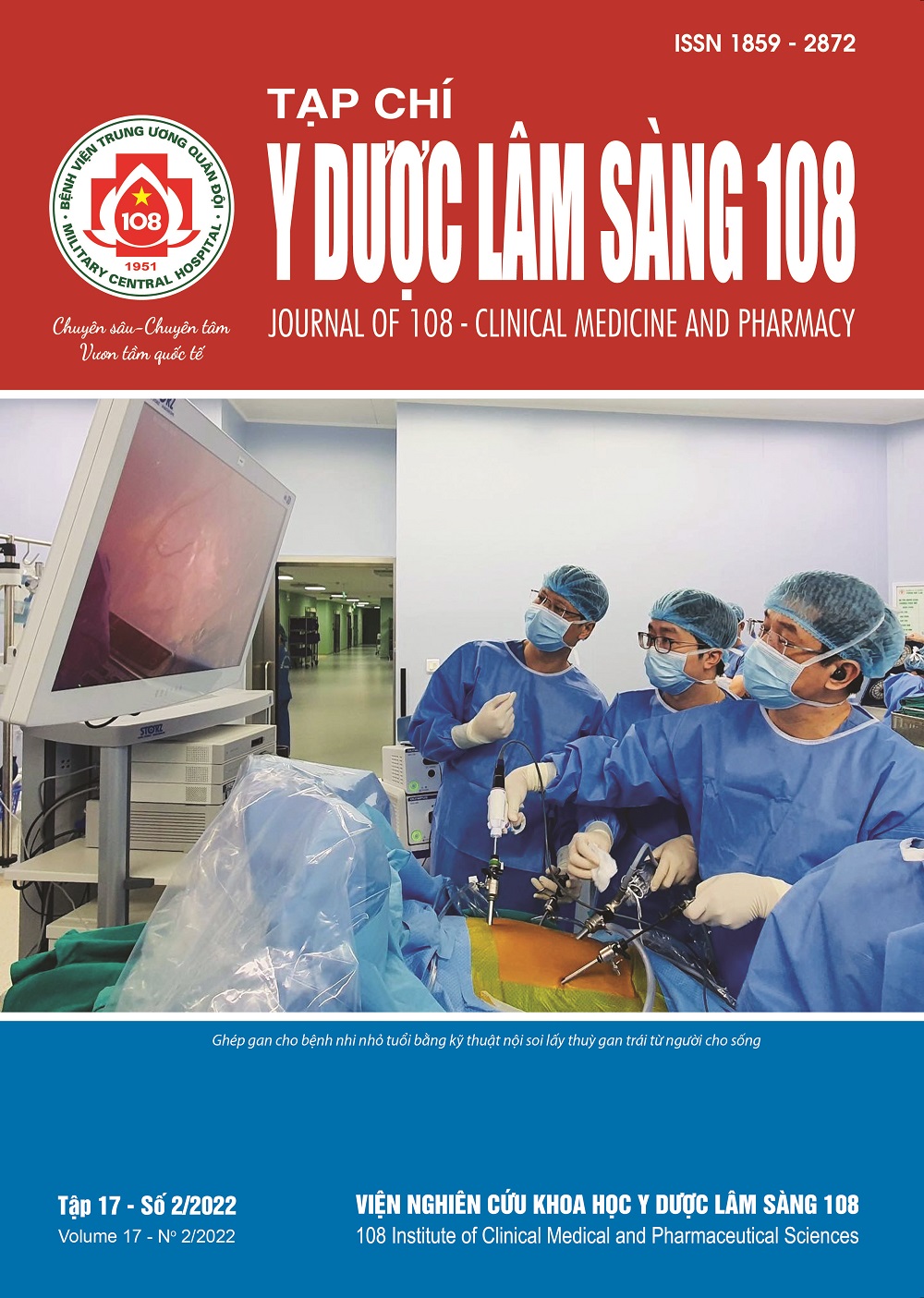Treatment efficiency of achalasia with esophageal balloon dilation at Bach Mai Hospital and 108 Military Central Hospital
Main Article Content
Keywords
Abstract
Objective: To evaluate the effectiveness of treatment of achalasia with esophageal balloon dilation at Bach Mai Hospital and 108 Military Central Hospital. Subject and method: A longitudinal follow-up intervention study on 75 patients diagnosed Diagnosis of achalasia indicated esophageal dilation at Bach Mai Hospital and 108 Military Central Hospital from 1/2014 to 12/2019. Result: Symptom score and frequency of dysphagia and reflux after dilation decreased significantly compared to before the intervention. These scores dropped sharply after 1 month, then gradually increased again. Most patients gain weight after dilation, especially after 3 months. The mean Eckardt score after 1 month, 3 months, 6 months, and 12 months, respectively, 1.0 ± 1.2, 1.7 ± 1.3, 2.0 ± 1.2 and 2.5 ± 1.3 points; they were significantly lower than before performing balloon angioplasty (p<0.01). The rate of successful treatment after intervention 1 month, 3 months, 6 months and 12 months were 94.7% and 93.3%, 89.3% and 81.3%, respectively. Conclusion: Esophageal balloon dilation in patients with achalasia reduces the severity and frequency of clinical symptoms and the Eckardt score. However, symptoms tend to recur over time. The higher success rates compared to other studies suggest a recommendation for widespread adoption of this treatment.
Article Details
References
2. Hulselmans M, Vanuytsel T, Degreef T et al (2010) Long-term outcome of pneumatic dilation in the treatment of achalasia. Clin Gastroenterol Hepatol 8(1): 30-35.
3. Nguyễn Lâm Tùng và Dương Minh Thắng (2014) Kết quả bước đầu điều trị bệnh co thắt tâm vị bằng phương pháp nong bóng qua nội soi không sử dụng màn huỳnh quang tăng sáng. Khoa học Tiêu hóa Việt Nam 34(9): 2191-2195.
4. Trần Xuân Hưng (2014) Ứng dụng bảng điểm Eckardt đánh giá hiệu quả điều trị co thắt tâm vị bằng phương pháp nong bóng. Nội khoa, Trường Đại học Y Hà Nội, Hà Nội.
5. Andreevski V, Nojkov B, Krstevski M et al (2013) Short and medium-term therapeutic effects of pneumatic dilatation for achalasia: A 15-year tertiary centre experience. Pril (Makedon Akad Nauk Umet Odd Med Nauki) 34(2): 15-22.
6. Bravi I, Nicita MT, Duca P et al (2010) A pneumatic dilation strategy in achalasia: Prospective outcome and effects on oesophageal motor function in the long term. Aliment Pharmacol Ther 31(6): 658-665.
7. Ghoshal UC, Kumar S, Saraswat VA et al (2004) Long-term follow-up after pneumatic dilation for achalasia cardia: Factors associated with treatment failure and recurrence. Am J Gastroenterol, 2004, 99(12): 2304-2310.
8. Vaezi MF, Pandolfino JE and Vela MF (2013) ACG clinical guideline: Diagnosis and management of achalasia. Am J Gastroenterol 108(8): 1238-1249, quiz 1250.
 ISSN: 1859 - 2872
ISSN: 1859 - 2872
